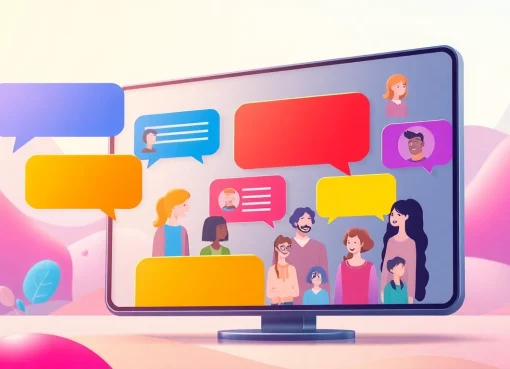Effective Communication in Relationships: Building Trust and Connection

Understanding the Importance of Communication in Relationships
Communication is the cornerstone of any successful relationship. It shapes how individuals interact, resolve conflicts, and express affection. When we think about communication in relationships, we acknowledge its vital role in fostering a deep understanding and connection between partners. Absence or inefficiency in communication can lead to misunderstandings, resentment, and emotional distance. Thus, exploring the intricacies of communication is essential for anyone seeking to improve their relationship quality.
The Role of Communication in Relationship Satisfaction
Studies consistently show that effective communication correlates strongly with relationship satisfaction. When partners communicate openly, they can express their needs, share their feelings, and resolve conflicts more easily. Furthermore, good communication allows partners to understand each other’s perspectives, fostering empathy and emotional support. In essence, the ability to articulate thoughts and feelings enhances overall companionship and love.
Common Barriers to Effective Communication
Despite its importance, many couples encounter barriers that prevent effective communication. These barriers may include:
- Assumptions and Misinterpretations: Partners often assume they know what the other person is feeling or thinking, which can lead to miscommunication.
- Emotional Triggers: Past experiences can influence present reactions, making it difficult to communicate calmly.
- Distractions: External distractions, such as technology or a chaotic environment, can hinder meaningful conversation.
- Fear of Vulnerability: Sharing deep feelings can be daunting. Fear of judgment or rejection can prevent open discussions.
How Communication Affects Emotional Intimacy
Emotional intimacy is a vital component of strong relationships, and communication plays a critical role in building it. When couples share their fears, dreams, and vulnerabilities, they create a closeness that fosters a deeper bond. Regularly engaging in meaningful conversations encourages partners to support each other, appreciate their differences, and find common ground. This relational intimacy often translates into higher levels of trust and affection, reinforcing the partnership’s foundation.
Key Communication Techniques for Better Relationships
Active Listening: The Foundation of Understanding
Active listening is perhaps the most crucial communication technique. It involves fully concentrating on what the other person is saying, understanding their message, responding thoughtfully, and remembering key points. Here are some effective strategies to practice active listening:
- Maintain Eye Contact: This shows the speaker that you are engaged and interest in their words.
- Reflect Back: Paraphrase what the speaker has said to confirm your understanding.
- Avoid Interrupting: Let them express their thoughts before interjecting with your own.
- Ask Open-Ended Questions: Encourage the speaker to elaborate their feelings and thoughts.
Expressing Needs and Feelings Clearly
Expressing oneself clearly is key to effective communication. Use “I” statements rather than “you” statements to avoid sounding accusatory. For example, instead of saying “You never listen to me,” try “I feel unheard when you look at your phone while I’m talking.” This approach reduces defensiveness and promotes understanding. Additionally, selecting the right time and place for important discussions can also significantly affect how well messages are received.
Nonverbal Communication Cues in Relationships
Nonverbal communication, including body language, tone of voice, and facial expressions, often conveys more than words alone. Understanding these cues can vastly improve relational dynamics. For example:
- Body Language: Open postures, such as uncrossed arms and leaning in, indicate engagement, while crossed arms may signal defensiveness or discomfort.
- Facial Expressions: Smiles, frowns, and other facial cues can express feelings that words cannot.
- Tone of Voice: The same message conveyed in different tones can be interpreted in multiple ways. A soft tone may indicate care, while a harsh tone can seem aggressive.
Overcoming Communication Challenges in Relationships
Resolving Conflicts through Open Dialogue
Conflicts are an inevitable part of any relationship. However, the manner in which they are addressed can make all the difference. Open dialogue involves discussing conflicts without hostility, ensuring both partners feel safe in expressing their views. Some effective steps include:
- Communicate During Calm Moments: Bring up conflicts when both partners are calm to avoid heightened emotions.
- Focus on the Issue, Not the Person: Address the specific issue at hand rather than blaming or criticizing the partner.
- Seek Solutions Together: Work as a team to find compromises that both can accept.
Managing Expectations and Misunderstandings
Expectations can sometimes become sources of conflict. It is essential for partners to openly communicate their expectations about various aspects of their relationship, such as responsibilities, future goals, and personal boundaries. Misunderstandings can often be clarified through honest discussion, where both parties express their expectations clearly and seek to understand the other’s viewpoint.
Strategies for Constructive Feedback
Providing constructive feedback is an art that can strengthen relationships. Here are some strategies to keep in mind:
- Be Specific: Instead of general comments like “You’re not supportive,” specify your concern, such as, “I felt unsupported when you didn’t attend my presentation.”
- Acknowledge Strengths: Balance criticism with recognition of what your partner does well. For example, “I appreciate your hard work on our projects, but I think we could improve the communication about deadlines.”
- Timing Matters: Find the right moment to provide feedback, ensuring the setting allows for an open dialogue.
Practical Tips to Enhance Communication in Relationships
Regular Check-ins to Foster Connection
Regularly scheduled check-ins offer couples an opportunity to discuss their feelings and the state of the relationship. Inviting a routine where both partners can express their thoughts on how things are going can forge deeper connections and prevent minor issues from escalating into major conflicts. It can be as simple as dedicating fifteen minutes a week to discuss anything from relationship goals to daily challenges.
Creating a Safe Space for Open Conversations
A safe space promotes honesty and vulnerability. Couples should intentionally cultivate an environment where both individuals feel valued and respected. This can be achieved by:
- Setting Ground Rules: Establish rules for communication, like not interrupting or dismissing feelings.
- Being Respectful: Ensure all conversations are conducted respectfully, regardless of the topic.
- Encouraging Honesty: Validate feelings by affirming that it’s okay to speak about concerns or disappointments.
Techniques for Reducing Stress during Discussions
Stress can hinder open communication. Using stress-reduction techniques can make discussions more productive. Techniques may include:
- Active Breathing: Before starting a conversation, take deep breaths to calm any anxiety.
- Setting a Comfortable Environment: Choose a place that feels safe and comfortable to encourage relaxed dialogue.
- Taking Breaks: If a discussion gets heated, agree to take a break and return to the conversation once both partners feel calm.
Measuring the Impact of Improved Communication in Relationships
Assessing Relationship Satisfaction Changes
To understand the effectiveness of communication strategies, it’s essential to assess relationship satisfaction regularly. Couples should reflect on their emotional well-being and perception of their partnership. Tools like surveys or journals can aid in gauging progress over time. Simple questions such as “Do I feel heard?” or “Are unresolved issues being addressed?” can provide clarity about changes in satisfaction levels.
Implementing Feedback Loops for Continuous Improvement
Integrating feedback loops ensures continuous growth in communication skills. This process may involve periodic evaluations where couples openly discuss what has improved and what still requires work. The more partners practice this, the more adept they become at navigating challenges and enhancing their communication effectiveness.
Recognizing Signs of Healthy Communication Practices
Finally, recognizing signs of effective communication in a relationship helps partners understand what works. Indicators include:
- Constructive Conflict Resolution: Evidence of resolving disagreements without escalating into fights.
- Empathy and Understanding: Both partners demonstrate the ability to empathize with each other’s feelings and perspectives.
- Increased Intimacy: Emotional and physical intimacy improves as both partners feel more connected and understood.



Leave a Comment